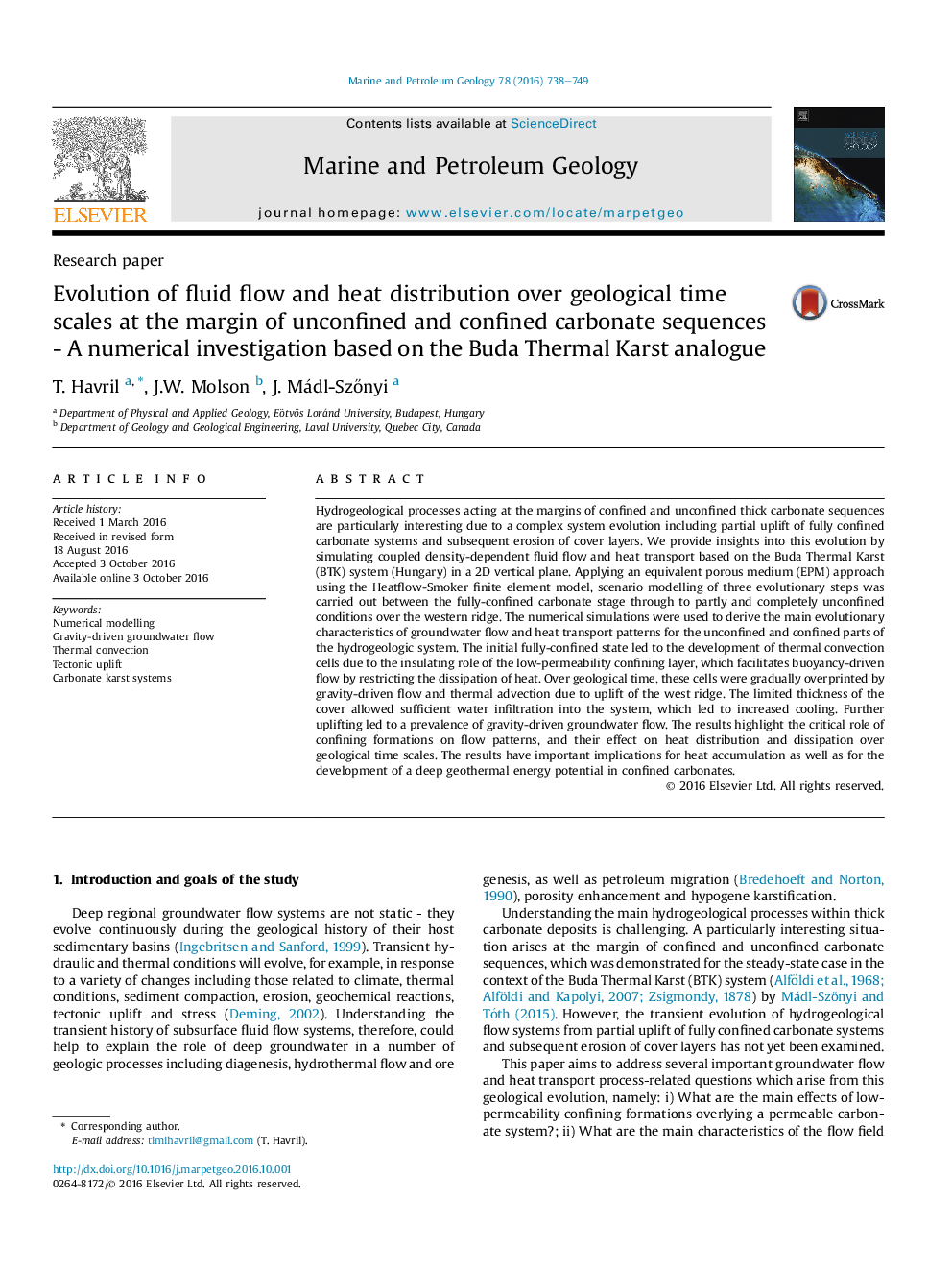| کد مقاله | کد نشریه | سال انتشار | مقاله انگلیسی | نسخه تمام متن |
|---|---|---|---|---|
| 6434435 | 1637149 | 2016 | 12 صفحه PDF | دانلود رایگان |
- Hydrogeological conditions of marginal carbonate systems evolve during uplift.
- Partial erosion and changing recharge conditions affect flow and heat transport.
- Relative importance of gravity and buoyancy depends on evolutional stages.
- Confining formations control flow patterns and heat distribution.
- Significant heat accumulation occurs under the confined carbonate sub-system.
Hydrogeological processes acting at the margins of confined and unconfined thick carbonate sequences are particularly interesting due to a complex system evolution including partial uplift of fully confined carbonate systems and subsequent erosion of cover layers. We provide insights into this evolution by simulating coupled density-dependent fluid flow and heat transport based on the Buda Thermal Karst (BTK) system (Hungary) in a 2D vertical plane. Applying an equivalent porous medium (EPM) approach using the Heatflow-Smoker finite element model, scenario modelling of three evolutionary steps was carried out between the fully-confined carbonate stage through to partly and completely unconfined conditions over the western ridge. The numerical simulations were used to derive the main evolutionary characteristics of groundwater flow and heat transport patterns for the unconfined and confined parts of the hydrogeologic system. The initial fully-confined state led to the development of thermal convection cells due to the insulating role of the low-permeability confining layer, which facilitates buoyancy-driven flow by restricting the dissipation of heat. Over geological time, these cells were gradually overprinted by gravity-driven flow and thermal advection due to uplift of the west ridge. The limited thickness of the cover allowed sufficient water infiltration into the system, which led to increased cooling. Further uplifting led to a prevalence of gravity-driven groundwater flow. The results highlight the critical role of confining formations on flow patterns, and their effect on heat distribution and dissipation over geological time scales. The results have important implications for heat accumulation as well as for the development of a deep geothermal energy potential in confined carbonates.
Journal: Marine and Petroleum Geology - Volume 78, December 2016, Pages 738-749
